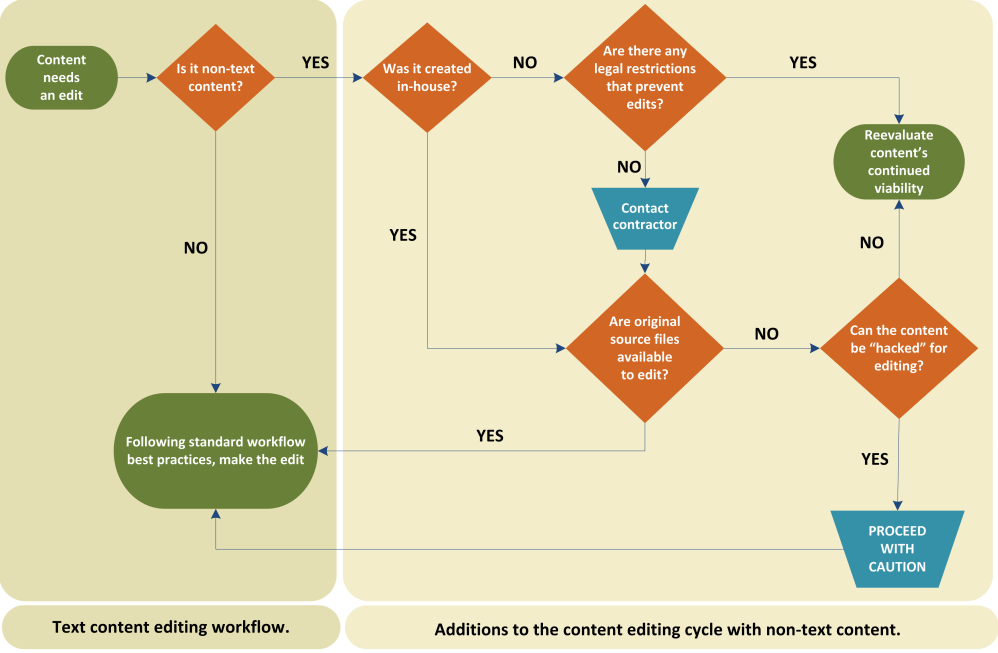Having someone in the content publishing process or workflow familiar with the content itself is more important than many realize.
Content creation: roles to fill
Lots of roles need to be filled to create useful, usable content. Business and customer needs must be assessed. An audit of current content should be completed to avoid unnecessary duplication. Capacities and resources need to be gauged. Firm decisions are required on questions like:
- Do we need to outsource its creation?
- Who will review it?
- Who will format and publish it?
- Who will look after it once it has been published?
This list is far from comprehensive. But, a gap in any one of these can have catastrophic effects. Redundancies. Overstretched budgets and staff. Ultimately, poor quality content.
One question in the process often gets overlooked: Are there people that know the content filling roles in the content creation workflow? Or are are they merely capable of completing the physical tasks of publishing?
This became abundantly clear to me just the other day.
Drumroll please: an example
I recently purchased a CD [yes, I am still buying CDs] by the jazz tenor sax titan Sonny Rollins, titled “The Freedom Suite.”
This is an important, landmark album.
In the late 00s, the company that owns the rights to “The Freedom Suite” changed hands again. As is often the case, new ownership brings new strategy. The new company decided to re-master and re-release the 1958 masterpiece.
Some new packaging was created, and it was unleashed onto the marketplace. I bought it. For full retail price. In 2010.
I was excited, until I saw this:

WHAT? Max Roach on TRUMPET? OH NO YOU DIDN’T.
I don’t wish bore you with hyperbole, but Max Roach was only one of the most important drummers of the 20th century.
The company with the business rights to sell the recording did not put a person familiar with the content in their content workflow.
The aftermath
A misspelling of Max Roach’s name might be a more pardonable crime. But playing the trumpet? The product has become the laughing stock of the community that purchases the product. And, the company has lost credibility and consumer confidence as a result.
Oversights with online content are just as easy, if not easier to make. Your content is important. Treat it with care. Give it priority. At the very least, doing so will help you avoid turning into the laughing stock of the community you serve.
Oh, and here is a clip of Max Roach TOTALLY NOT PLAYING THE TRUMPET:


